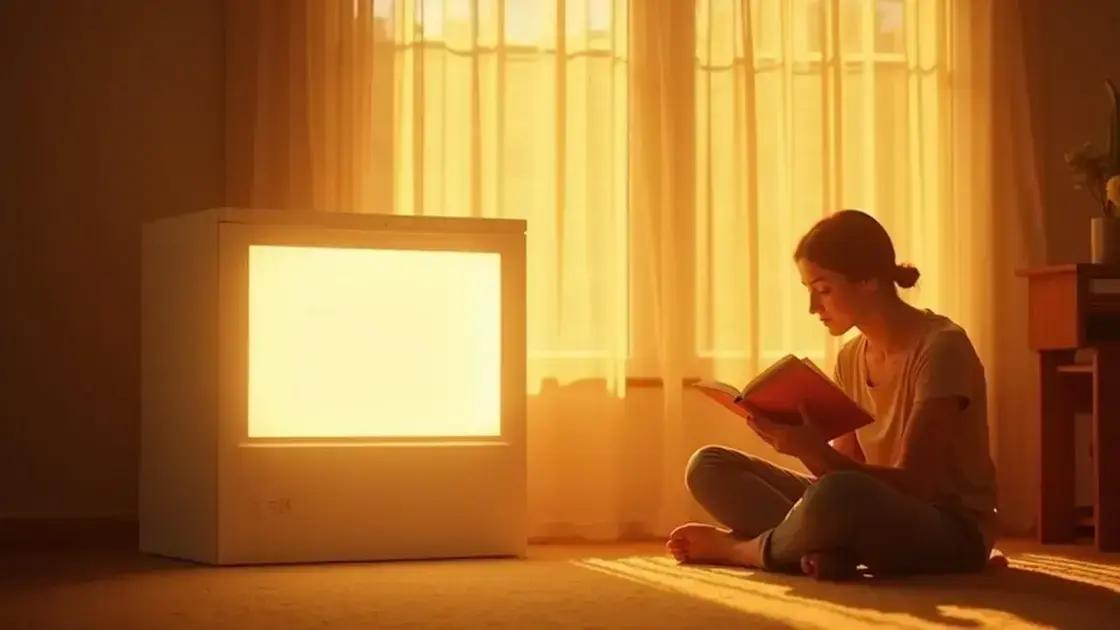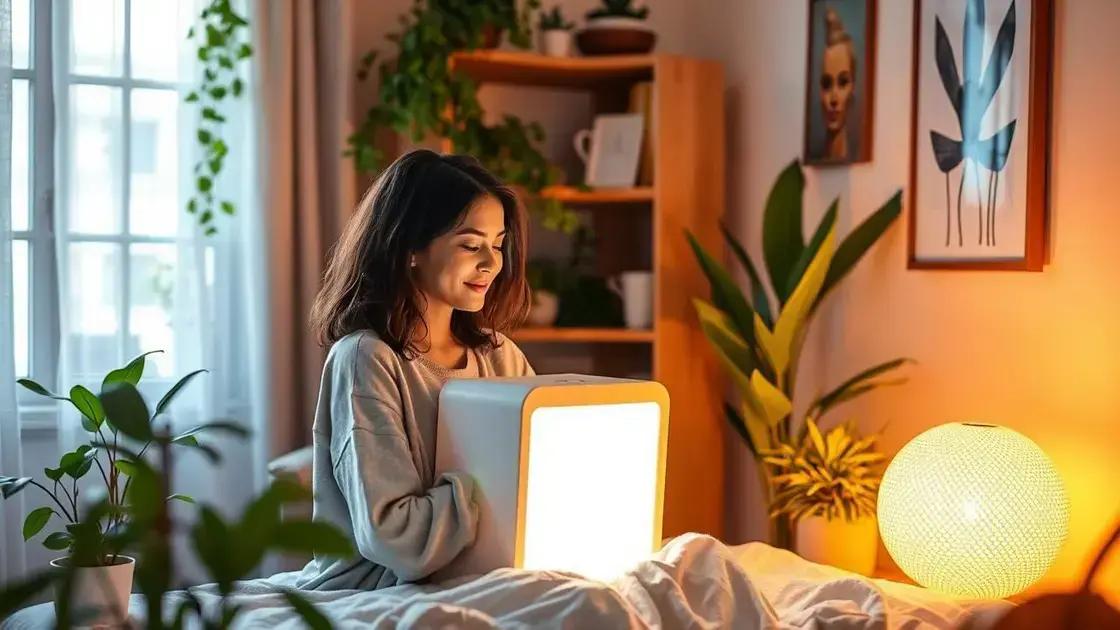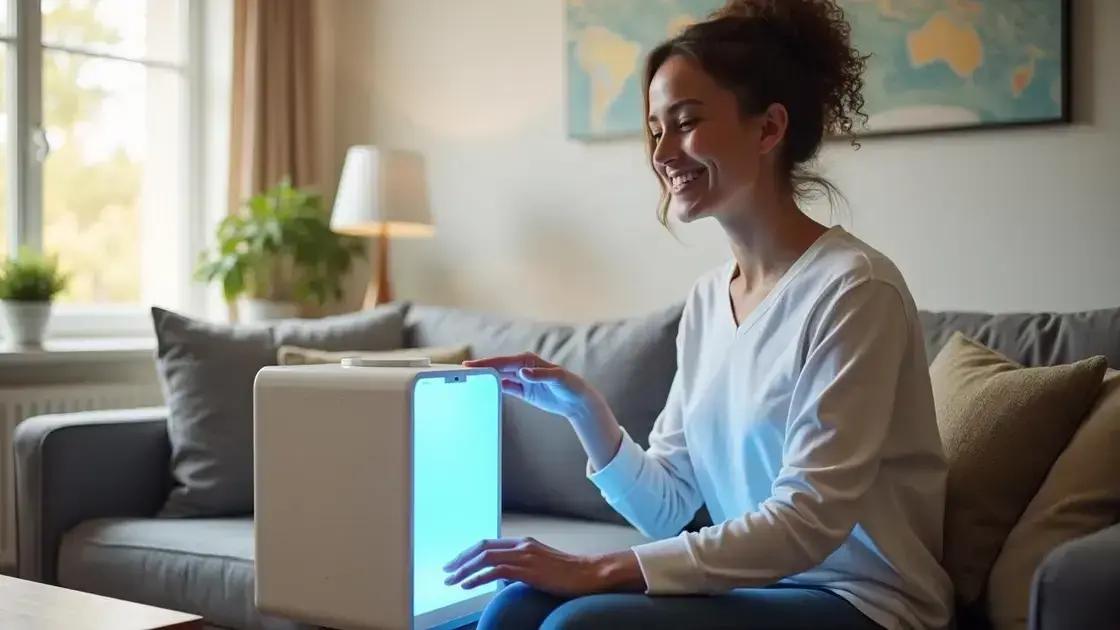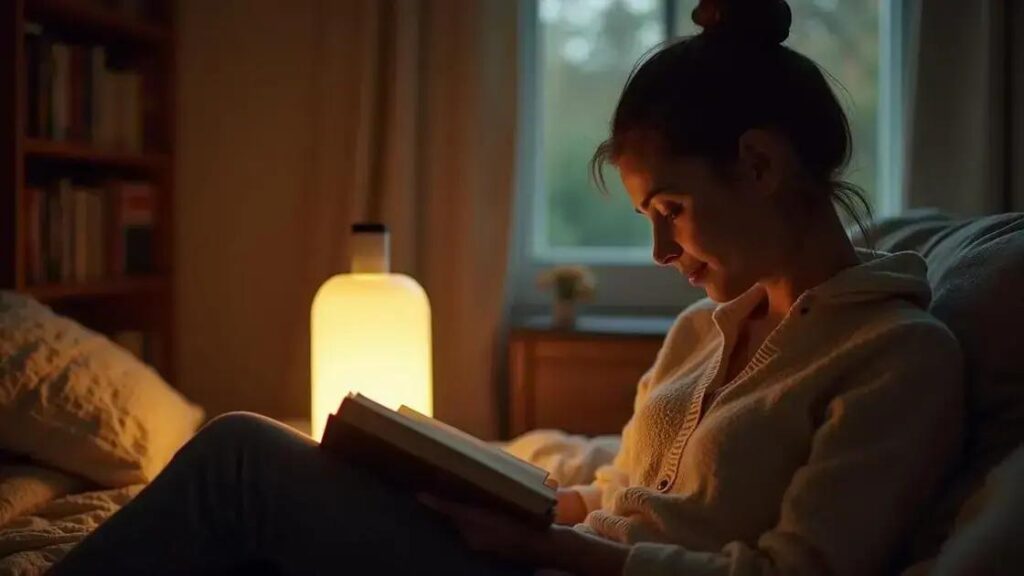Light therapy is an effective treatment for seasonal depression, helping to improve mood, energy levels, and sleep patterns by mimicking natural sunlight. It involves using a specially designed light box for 20 to 30 minutes each day, preferably in the morning, and can be used alongside other treatments for enhanced results.
Seasonal depression can significantly affect your mood and energy levels, especially during the winter months when sunlight is scarce. Many individuals struggle to cope with these feelings, leading to an overall decline in their well-being. Light therapy is a valuable tool that can help combat the symptoms of seasonal affective disorder (SAD). By exposing yourself to specialized light boxes, you can improve your mood and regain your energy. In this article, we will delve into how to manage seasonal depression using light therapy, its benefits, and practical advice on using it effectively.
Understanding Seasonal Depression

Seasonal depression, also known as Seasonal Affective Disorder (SAD), is a type of depression that typically occurs during specific seasons, especially in winter when daylight hours are shorter. Many people experience mood shifts, feelings of sadness, and low energy during these times. It is important to understand that seasonal depression is not just a case of the ‘winter blues’; it is a legitimate mental health condition that requires attention.
The exact cause of seasonal depression is not fully understood, but some researchers believe it is linked to changes in sunlight exposure. A decrease in sunlight may disrupt your body’s internal clock, or circadian rhythm, and lead to lowered levels of serotonin, a brain chemical that affects mood. Moreover, reduced sunlight can also lead to a drop in melatonin levels, which play a role in sleep patterns.
Symptoms of seasonal depression can vary, but common signs include:
- Persistent feelings of sadness or hopelessness
- Loss of interest in activities once enjoyed
- Changes in appetite or weight
- Sleep disturbances, such as insomnia or oversleeping
- Fatigue and low energy
- Difficulty concentrating
Diagnosis and Treatment
If you think you may be experiencing seasonal depression, it is important to speak with a healthcare professional. They can evaluate your symptoms and may suggest treatments that range from light therapy to psychotherapy and medication. Understanding the nature of seasonal depression is the first step toward finding effective management strategies.
What is Light Therapy?

Light therapy is a treatment that involves exposure to specific wavelengths of light for certain periods. It is often used to help relieve symptoms of Seasonal Affective Disorder (SAD) and other types of depression. The therapy typically utilizes a light box that emits bright light, mimicking natural sunlight.
This type of therapy works by affecting brain chemicals linked to mood regulation. The idea is that by getting the right amount of light during darker months, individuals can help improve their mood and energy levels. Light therapy is particularly effective when used consistently, aiming for at least 20 to 30 minutes each day.
How Does Light Therapy Work?
Light therapy simulates sunlight, helping to restore the body’s natural rhythm. When you sit in front of a light therapy box, it sends out bright light to your eyes, which helps stimulate the production of serotonin, a hormone that positively affects mood. This is especially useful during winter when sunlight is limited.
It’s important to note that not all light is beneficial. Regular indoor lighting does not provide the same effect as the specialized light used in light therapy. The light boxes used for this treatment should filter UV rays and have a specific brightness level measured in lux.
Types of Light Therapy
Several types of light therapy devices are available, including:
- Light Boxes: These are portable and emit a bright, uniform light.
- Light Visors: These are wearable devices that provide light exposure directly to the eyes.
- Dawn Simulators: These gradually increase light in the morning to simulate a natural sunrise.
While light therapy is known to be effective for many people, it is essential to consult with a healthcare provider before starting treatment to ensure it is the right choice for you and to discuss proper usage.
Benefits of Light Therapy for Mood Disorders

Light therapy offers a range of benefits for individuals suffering from mood disorders, especially for those diagnosed with Seasonal Affective Disorder (SAD). Here are some key advantages:
Improves Mood
One of the primary benefits of light therapy is its ability to enhance mood. By increasing exposure to bright light, it helps to boost serotonin levels in the brain, which can lead to a more positive outlook and improved emotional well-being.
Enhances Energy Levels
Many people with seasonal depression experience fatigue and low energy. Light therapy can combat these symptoms by stimulating the body’s internal clock, helping individuals feel more awake and alert during the day.
Regulates Sleep Patterns
Light therapy can also help improve sleep quality. By regulating melatonin levels, which play a critical role in sleep-wake cycles, it can help individuals fall asleep more easily and wake up feeling refreshed. Better sleep contributes to overall mental health and mood stability.
Reduces Symptoms of Depression
Numerous studies have shown that consistent use of light therapy can significantly reduce symptoms of depression. Many users report feeling less anxious and more motivated to engage in daily activities. This effect can be especially beneficial during the winter months when symptoms typically worsen.
Non-Invasive Treatment Option
Light therapy is a non-invasive and drug-free option for those looking to manage their mood disorders. This makes it an appealing choice for many, especially for individuals who wish to avoid the side effects associated with some medications.
In addition to these benefits, light therapy is relatively easy to incorporate into daily life. A few minutes of exposure each day in the comfort of home can contribute to its positive effects.
How to Use Light Therapy Effectively

Using light therapy effectively requires some planning and understanding to maximize its benefits. Here are practical tips to get the most out of your light therapy sessions:
Choose the Right Light Box
When selecting a light therapy box, ensure it emits at least 10,000 lux of bright light. Look for a box that filters out UV rays and is designed specifically for therapeutic use, as these features enhance safety and effectiveness.
Set a Consistent Schedule
Consistency is key for effective light therapy. Aim to use your light box every day at the same time, preferably in the morning. Regular exposure helps establish a routine, which can improve mood and energy levels.
Positioning Matters
For optimal results, position the light box about 16 to 24 inches away from your face. The light should be directed toward your eyes but never looking directly into it. A gentle, side view is sufficient to benefit from the exposure.
Duration of Use
Start with 20 to 30 minutes of use each day. Some people may require longer sessions, but it is good to begin gradually and adjust based on personal comfort and response.
Be Mindful of Side Effects
While light therapy is generally safe, some users may experience side effects, such as eye strain or headaches. If you notice these symptoms, reduce the intensity or duration of your sessions. It’s advisable to consult a healthcare provider if side effects persist.
Combine with Other Treatments
Light therapy can be more effective when combined with other treatments for mood disorders. Consider integrating it with counseling or medication, as recommended by your healthcare provider, for a holistic approach to managing seasonal depression.
In Summary: Managing Seasonal Depression with Light Therapy
Seasonal depression can significantly affect your mood and daily life, especially during the darker months of the year. However, light therapy offers a safe and effective way to alleviate symptoms and improve overall well-being.
By understanding seasonal depression and utilizing light therapy correctly, you can enhance your mood, boost energy levels, and regulate sleep patterns.
Incorporating light therapy into your daily routine, choosing the right device, and consulting with healthcare providers can lead to successful management of seasonal affective disorder. Whether used alone or in combination with other treatments, light therapy can be a powerful tool in your mental health toolkit.
Don’t hesitate to explore this option and take proactive steps toward a brighter and more fulfilling season.
FAQ – Frequently Asked Questions about Managing Seasonal Depression with Light Therapy
What is seasonal depression?
Seasonal depression, also known as Seasonal Affective Disorder (SAD), is a type of depression that occurs at certain times of the year, particularly in winter.
How does light therapy work?
Light therapy mimics natural sunlight, improving mood and energy levels by increasing serotonin production in the brain.
What are the benefits of light therapy?
Light therapy can enhance mood, boost energy levels, regulate sleep patterns, reduce symptoms of depression, and is a non-invasive treatment option.
How long should I use light therapy each day?
It is recommended to use light therapy for 20 to 30 minutes daily, preferably in the morning for optimal results.
What should I look for when choosing a light therapy box?
Choose a light box that emits at least 10,000 lux, filters out UV rays, and is specifically designed for therapeutic use.
Are there any side effects of light therapy?
Some users may experience eye strain or headaches. If these symptoms occur, reduce the intensity or duration of use.












